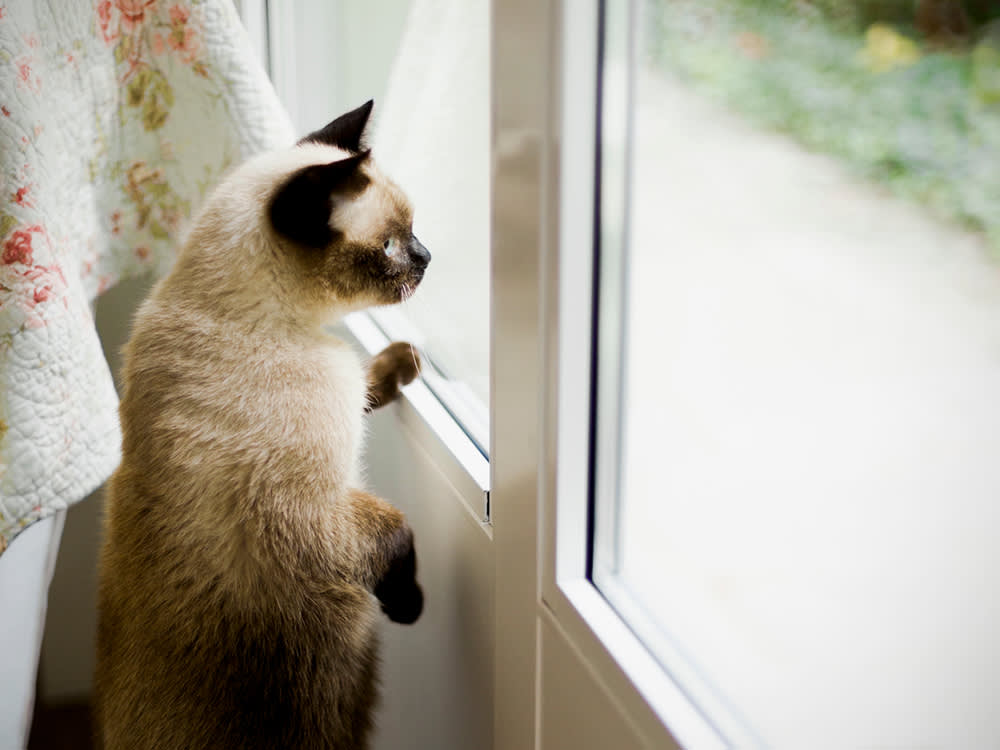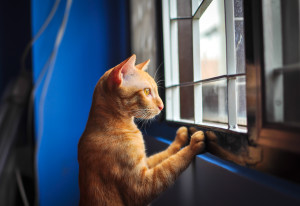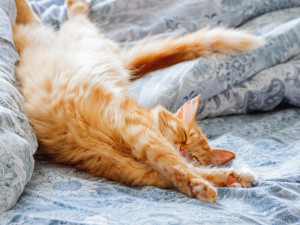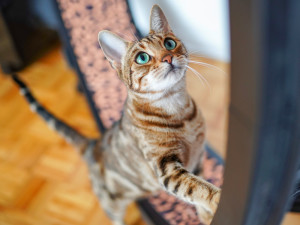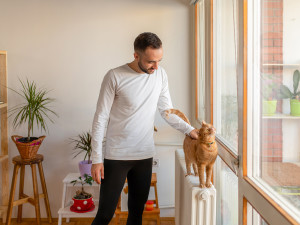How to Ease Your (Cat’s) Return-to-Office Anxiety
A veterinarian and a behaviorist’s tips for preparing your cat for your new WFO schedule.
Well, the ill-fated day that all of our pets have been dreading has finally arrived: you’ve had a company-wide Zoom call and they’ve announced that a return to the office is finally happening. While you may be feeling a slew of emotions like fear, uncertainty, and unease, your pet is very likely to feel the same way once you suddenly begin disappearing for eight hours a day. Fortunately, we’ve spoken with some cat experts and have come up with a game plan to get your pet ready for your first day back at the office (and all the days that will follow).
Keep Them Entertained
First and foremost, keeping your cat active and entertained will do far more for their mental wellbeing and physical health than anything else. “The key to a happy indoor cat is environmental stimulation,” says Dr. Annette Louviere, Veterinary Genetics Manager at Wisdom Panel. “Whether changing up your schedule or still working from home, these are points that can benefit all kitties.” It’s important to ensure that your cat is getting the proper daily exercise (most veterinarians recommend at least 20 minutes of playtime per day).
Save on the litter with color-changing tech that helps you better care for your cat.
If you aren’t able to wave a feather wand toy around for your cat or throw them some treats at the beginning or end of the work day, you should set out interactive toys or food puzzles that they can engage with while you’re away. Certified cat behaviorist Cristin Tamburo weighs in: “It’s even more important when we do leave the home to make sure that they have the appropriate enrichment and outlets to be cats (and be dogs, for that matter) — things to keep them busy.”
Some other ideas to keep your cat’s brain stimulated and ensure they don’t wreak havoc in your absence: Set up a scavenger hunt with kibble or treats for them to discover throughout the day, turn on CatTV (exactly what it sounds like), or create a similar sense of outdoor adventure by setting up a bird feeder in view of a comfy window perch.
How much do you spend on your pet per year?
Stick to a Routine
It’s fair to assume that you and your cat may have fallen into a consistent WFH routine within the last two years. The same can be true of both of your acclimation to the new schedule, whether your workplace is a hybrid or full-time in-person office space. “Cats like predictability within their home environment,” advises Dr. Louviere. “So, when able, it helps to keep a routine your cat can predict — like feeding, litter box scooping, play and snuggle times.” If you’re able to come up with a game plan for the times of day that you can dedicate solely to your cat’s needs, you’ll both be better off for it. After all, a happy cat is one who knows what to expect.
While it may not be possible to fully ease your cat into this new transition (most of us don’t get to choose when’s most convenient to return to office based on our pets), you can certainly make an effort to slowly integrate your new routine into your cat’s life. “Just like humans, a lot of animals do experience separation anxiety,” notes Tamburo. “Especially with cats, anything we do, we need to do it in small baby steps. So while we might not be able to leave the house for eight hours a day, at least if we can leave for an hour or two here or there so they get used to us not being home all the time, that helps to ease them into it.” If you can avoid shocking your cat or creating an environment where they feel insecure and confused, this can help prevent damage to your relationship and behavioral problems down the line.
Call in Reinforcements
If your cat is struggling to adjust to your absence, there are ways to keep them calm with little to no legwork for you. “During the initial transition, some cats benefit from pheromone diffusers (like Feliwayopens in new tab) placed within the home,” suggests Dr. Louviere. “Pheromones are a type of natural messaging system that cats use for various reasons, such as to mark territory, signal contentment, and enhance the mother-kitten bond.” So, using different types of pheromone diffusers can help address feelings of discomfort and unfamiliarity that anxious cats may suffer from.
If you work long hours — and/or your cat starts knocking things off shelves in protest when you’re gone for too long — you may want to hire a cat sitter to pop in to check on them midday.
Check in with Your Cat (and Yourself)
If you’re feeling nervous about being apart from your greatest work buddy, confidant, and pandemic emotional support animal, you aren’t the only one. There have been countless studies conducted about how our relationships with our pets have changed over the course of the pandemic. According to a Mars Petcare study, more than half of millennials and 64% of Gen-Z admitted they would switch jobs or reduce working hours to spend more time with their pets. If that’s not an option, Dr. Louviere suggests using “cameras or video treat dispensers to allow pet parents who miss their cats to check in — with the latter also allowing remote treat action!”
The best way to honor our cats and all the comfort they’ve provided during the most uncertain moments is to reassure them that they can count on us to be consistent and make up for any lost time. And hey, they’ll likely be so happy to see you at the end of a long day that they won’t even remember the hours you were away and they were snoozing soundly.
